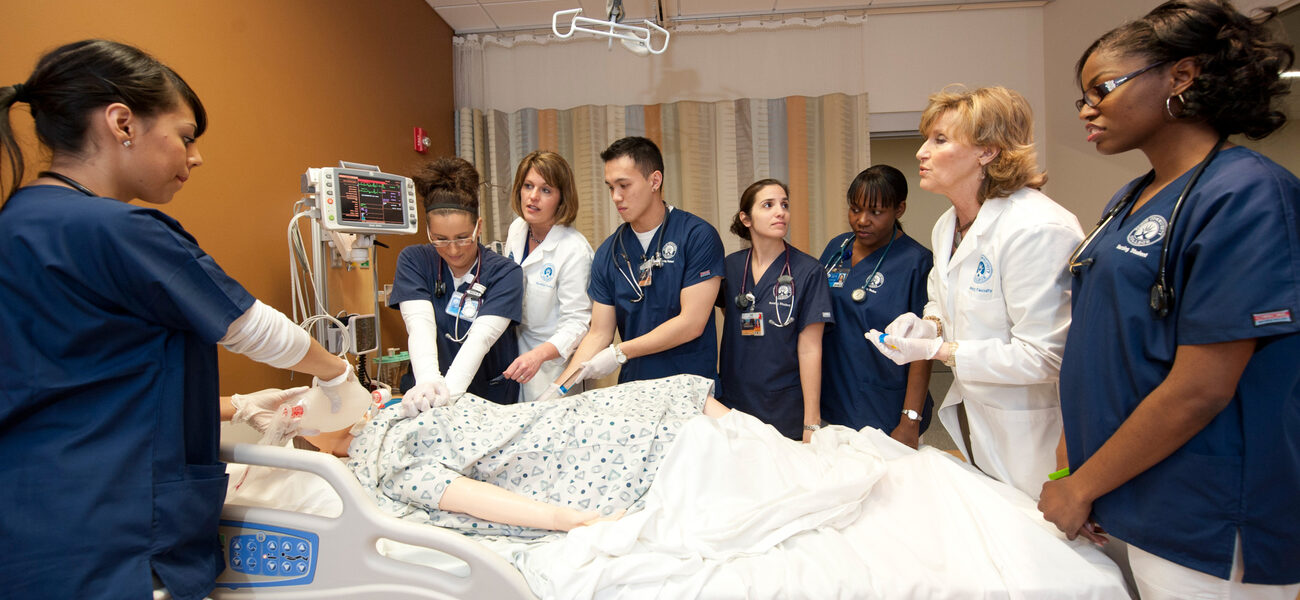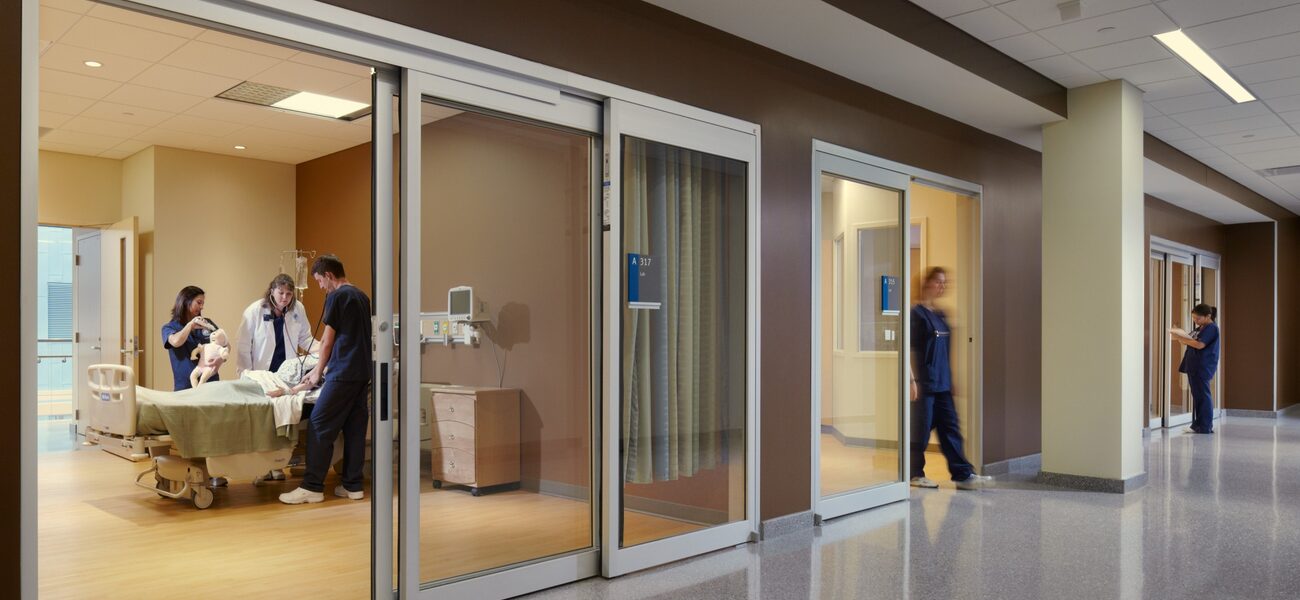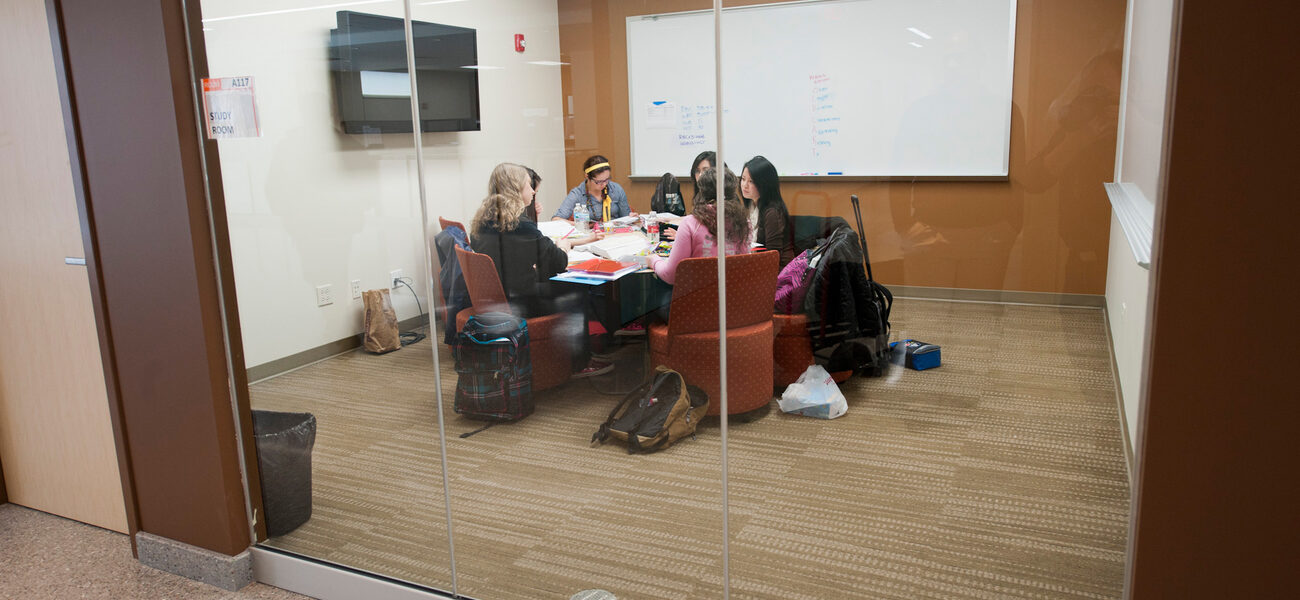Community colleges are fulfilling an increasingly important roll in higher education, particularly in allied health fields, and as a result are focusing on modern facilities and equipment to provide hands-on training. Elgin Community College (ECC) in Illinois recently opened a new, state-of-the-art Health & Life Sciences building, which is helping the college achieve its goals of remaining competitive and expanding program offerings.
“Community colleges and universities are competing for the same students, so it is vitally important to have great facilities to draw students to your programs,” says Wendy Miller, dean of health professions at ECC. “The limiting factor to expansion is a lack of clinical spots for hands-on training. One solution many programs are looking toward is the use of on-campus simulations.”
ECC has offered healthcare courses for about 50 years, and currently offers 12 different majors to 1,800 students. Like other community colleges, ECC has seen an increasing number of students enrolling in these programs. There are approximately 5 million healthcare workers in the United States, and community colleges are educating more than 60 percent of them, says Miller.
“We were busting out at the seams. Our facilities were tight, our equipment was dated and we were trying to keep it together with duct tape and paper clips. We couldn’t grow any programs or offer new ones,” she says.
The three-story, 130,000-sf facility opened in January 2012, six months ahead of schedule and under budget at $41 million.
“Now all of our health professions programs are located in one building, and that has given us the ability to develop new synergies.”
The Planning Stage
Miller emphasizes the importance of choosing a design team that embraces your institution’s vision and with whom the planning team can share ideas and solve problems. ECC’s project architects at Kahler Slater helped hone the vision for the Health & Life Sciences building, an important first step in the design process.
“Making that connection is important because it helps you get the most out of your building,” she says.
Throughout the design process, while making hundreds of decisions, ECC’s planning team kept two project drivers in mind: The building should have the look and feel of a hospital, and it should be a place where students develop skills through experiential learning.
“We wanted our students to experience the same types of technology they would see in the clinical setting, so we outfitted the building with state-of-the-art lab equipment,” says Miller.
The building’s features include:
- An overhead camera mounted over one of the dental operatory lights.
- A camera mounted over a phlebotomy draw station to record procedures and project them to a nearby flat screen.
- A non-energized X-ray unit in a radiography classroom, so students can practice positioning patients before they get into the laboratory setting.
- Two wet rooms in massage therapy areas equipped with Vichy showers, so students can practice rinsing down patients after scrubs and wraps.
- State-of-the-art lights over the operating table in the operating suite.
- A boom with a wide array of endoscopy equipment.
- Flash autoclaves and ultrasonic cleaners, so students can practice sterilizing equipment and setting up trays.
A simulation center is equipped with four rooms resembling hospital patient rooms: one labor and delivery room, one ER/ICU room, and two medical/surgical rooms. Each room has a high-fidelity mannequin “that can do just about anything but get out of bed itself,” notes Miller. The headwalls in simulation rooms are fully functional with oxygen, gas, and suction.
“If there was ever any mass casualty type of incident whereby the local hospitals needed additional beds, they could use the college’s facilities. These simulation rooms are also equipped with audio and video recording devices so we can debrief with our students in a nearby conference room or a classroom.”
Classroom configurations were equally important to the planning team. They wanted furniture that could be moved around to facilitate group work, but also comfortable seating, because students can be in class for three to four hours.
“Our classrooms are situated close to the labs, so it is easy for students to move back and forth if they are in a course that has both a lecture and a lab component,” says Miller.
Locker rooms were placed close to the classrooms as well, although it took time for them to catch on, she adds. The area is popular with students now, and faculty have found that students stay more focused in class now that they can stow items like backpacks and cell phones.
Collaborative spaces, or study rooms, were designed with a millennial generation in mind. There are 12 such spaces in the new building, and each one accommodates eight to 12 students and has moveable furniture. Additional comfortable seating in the hallways can accommodate about 150 students.
“Each one of these spaces has glass windows and doors, which was completely intentional on our part. We want to make sure students are actually studying when they are in these rooms,” explains Miller. “These spaces are highly utilized, especially on the first floor of the building. We find that students are camping out for an entire day because the furniture is so comfortable. We are also finding that students from other spots on campus are coming to our building because it is a great place to get work done.”
Students also find these study spaces attractive because of the plasma screens and whiteboards. They can hook up their laptops, watch video clips, and use the whiteboards to solve problems.
The new facility has space to offer onsite clinics, which give students hands-on training opportunities while providing a community service. In a dental clinic with eight operatories (each includes a dental chair and equipment and room for the dentist and dental assistant) they periodically see low-income patients for fillings and extractions. This space includes a check-in desk so students gain experience in that area, as well.
A massage clinic has 10 tables and serves about 1,300 clients every year. The clinic has a dedicated parking lot with handicapped-accessible parking so patients can come and go easily.
Positive Outcomes
An unexpected bonus of the design process was a new vision for the department—interdisciplinary learning. “When we saw how close the facilities would be, we started envisioning collaborations,” says Miller.” Now that we are in the building, and faculty are interacting more than they have ever done in the past, it is one of our academic goals.
“We have a beautiful simulation center, and we thought it would be great to have students start training with one another. In the real world, they will have to work in teams.”
ECC has slowly started to implement this philosophy by putting together scenarios, such as car accidents, in which students from different majors work together. The biggest hurdle is scheduling, since students are on campus at varying times of day, and some take courses online.
“We’re trying to break down some of those barriers,” says Miller. “It is absolutely easier with the new facility. Students see the value of working together and learning what others do.”
Fulltime faculty have private offices located close to the classrooms and laboratories, making it easier for them to get together.
“The number one perk is having all the departments in one building. We feel like we are a real team now, and the departments are sharing resources, which is something that almost never happens in academia.”
The expensive equipment has warranted more police presence and security cameras, a positive change because it makes staff and students feel safer, says Miller.
Lessons Learned
The new Health & Life Sciences building was the largest project Miller had ever worked on, and one important lesson she learned was to plan ahead for the expense of equipment and warranties.
“All this technology we put into the building came with expensive warranties and replacement parts. I would recommend trying to have the first year or so of those warranties paid for out of building funds, because it can save headaches down the road.”
The Health & Life Sciences building has become the main entrance point to campus, and is a great recruitment tool for department programs. But an unexpected downside was the high traffic flow. This had an impact on maintenance, especially for the bathrooms off the atrium, Miller says, so it took time to work out the right housekeeping schedule.
The entrance to the massage therapy suite is an area where students store lotions, oils, towels, and other supplies, and it becomes a bit messy for public view. “If we could do it again, we probably would have rearranged that space.”
The new facility also should have included a large classroom space to accommodate at least 50 people. Frequent advisory committee meetings or division meetings, and special receptions, have to be held elsewhere on campus.
Visions for the Future
Thanks to the new facility, ECC plans to add three new advanced imaging certification programs in fall 2014, and is hoping to expand into physical therapy rehabilitation services.
Miller hopes to utilize shell space on the facility’s third floor to start a campus health clinic. Healthcare students could practice basic skills like taking blood pressures and performing strep screens, while serving the other students who already pass through the area.
The Health & Life Sciences building may also help ECC expand into continuing education.
“We have developed workshops for local healthcare practitioners who want to update their skills or see some of the latest technology. When we were in our old facility, we would have never even dreamed of trying something like that. Now that we have this wonderful space and equipment, it is a great way to strengthen our partnerships with the local healthcare community.”
By Taitia Shelow
This report is based on a presentation Miller made at Tradeline’s 2013 Academic Medical and Health Science Centers conference.


